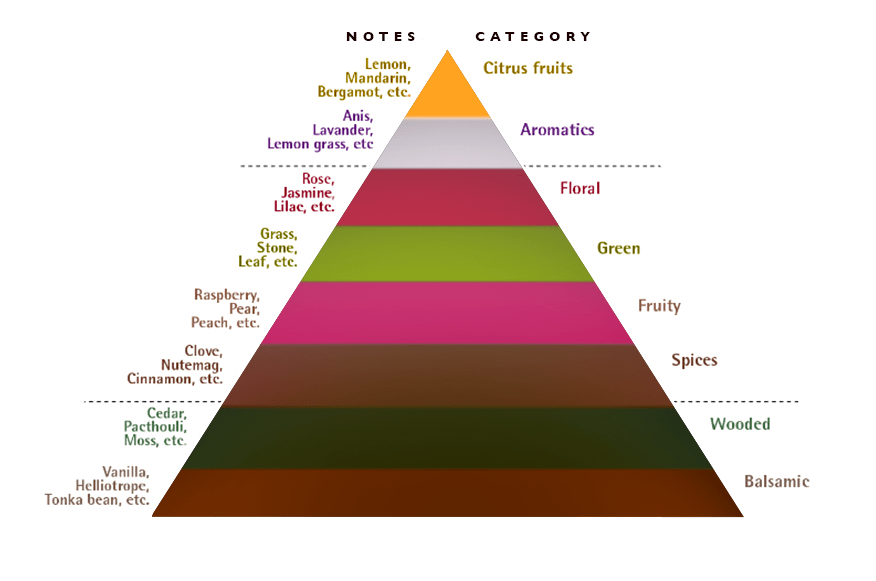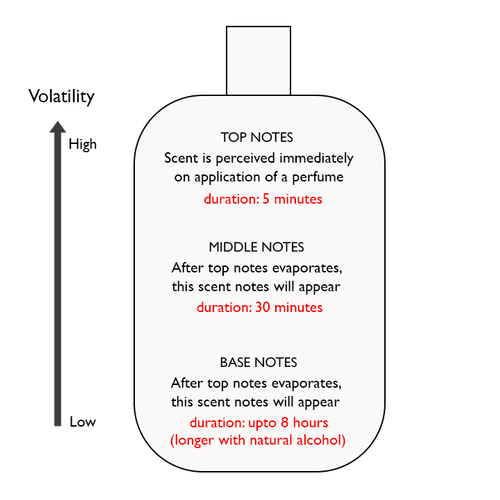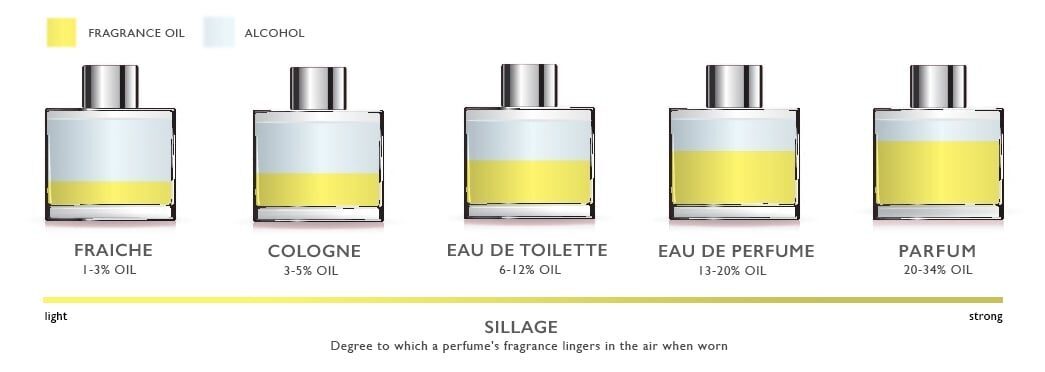Terms, Notes & General Knowledge
A quick reference to perfume structure and common fragrance families.

Perfume Pyramid Explained
Notes are the facets you smell as a fragrance develops. They’re grouped into top (head), heart (middle), and base notes. Top notes are bright and fleeting; heart notes form the character; base notes give depth and longevity. Citrus and aromatic notes usually sparkle on top, while woods, balsams, and resins anchor the base—everything else layers in between.


Fragrance Families (Quick Reference)
Fresh
Often used as top/middle notes. Great for daytime and summer.
Chamomile, Freesia, Cherry Blossom, Gardenia, Geranium, Hibiscus, Honeysuckle, Hyacinth, Jasmine, Lily of the Valley, Lotus, Magnolia, Neroli, Orange Blossom, Peony, Plumeria, Rose, Tuberose, Violet, Water Lily, Ylang Ylang
Woody
Dry, distinctive; shine in the base.
Bamboo, Birch Tar, Cardamom, Cedarwood, Coriander, Eucalyptus, Frankincense, Juniper Berry, Leather, Musk, Myrrh, Nag Champa, Oakmoss, Patchouli, Pine, Rosewood, Teak Wood, Tobacco, Vetiver
Oriental (Amber)
Rich, dominant; ideal for heart & base.
African Musk, Almond, Amber, Benzoin, Black Pepper, Black Tea, Cardamom, Chocolate, Cinnamon, Cloves, Coriander, Ginger Root, Hazelnut, Honey, Musk, Nutmeg, Patchouli, Pink Pepper, Sandalwood, Tonka Bean, Vanilla Bean
Citrus
Sparkling, youthful; pairs well with fruity/fresh.
Aloe Vera, Bergamot, Lemon Zest, Lemongrass, Neroli, Tangerine, Yuzu
Fruity
Fun & light; best as top or heart.
Apple Blossom, Cinnamon, Black Cherry, Blackberry, Black Currant, Blood Orange, Blueberry, Coconut, Cucumber, Fig, Grapefruit, Green Apple, Honeydew, Kiwi, Lemon, Lime, Mango, Orange, Peach, Pear, Pineapple, Pink Grapefruit, Pomegranate, Pumpkin Spice, Raspberry, Strawberry, Watermelon, White Tea